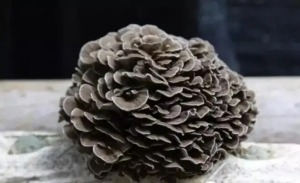Breast cancer, the most common cancer in women worldwide, is a heterogeneous disease composed of a broad spectrum of tumor subtypes with different biological characteristics and clinical behavior. The primary breast cancer markers traditionally used in routine clinical practice to establish the diagnosis, prognosis, and therapy of the disease are estrogen receptor (ER), progesterone receptor (PR), and human epidermal growth factor receptor 2 (HER2).
Thus, tumors that express ER and PR are treated with agents that interfere with hormone production or action, plus chemotherapy. Tumors with over-expression and gene amplification of HER2 are treated with agents that inhibit HER2, plus chemotherapy. On the contrary, there is no targeted therapy for tumors that do not express any of the three markers (triple negative), so they can only be treated with chemotherapy. Therefore, new effective and safe drugs urgently need to be found to treat highly aggressive Triple-negative breast cancer (TNBC).
In addition to the excellent nutritional value, the medicinal aspects of mushroom extracts or their metabolites make them excellent candidates for the search and development of new drugs. In this field, many mushroom species are valued as small pharmaceutical factories producing hundreds of bioactive compounds, many of which have been shown to exert therapeutic action against cancer development. Such is the case of D-Fraction, a bioactive proteoglycan extracted from Maitake (Grifola frondosa) mushroom, a dietary supplement.
In general, mushroom metabolites with antitumor activity exert their effect exclusively by acting on the immune response of the host organism or acting directly on the tumor cell, interfering with particular cellular signal transduction pathways linked to cancer development and progression. Unlike these, Maitake D-Fraction attacks tumor cells both by their immunostimulatory capacity and independently of the immune system. Particularly concerning the immuno-independent antitumor effect of D-Fraction, it has been observed to be tumor-type specific.
In this study, we demonstrated for the first time that Maitake D-Fraction could act directly on TNBC MDA-MB-231 and 4T1 cells by modulating different cellular capabilities whose deregulation leads to the development and progression of cancer and thus decreasing the highly aggressive phenotype of these tumor cells.
The present data show that Maitake D-Fraction decreases the viability of TNBC MDA-MB-231 cells through apoptosis induction. Our previous works demonstrated that D-Fraction also reduces the viability of hormone-dependent MCF7 and hormone-independent LM3 breast cancer cells.
These results indicate that Maitake D-Fraction affects breast cancer cell viability regardless of hormone receptors and the HER2 status of tumor cells. This capability exerted by D-Fraction is not a common feature of medicinal mushroom extracts. Of 38 extracts evaluated on MCF7 (hormone-dependent), BT-20, and MDA-MB-231 (TNBC) cells, only three could affect the cell viability of both tumor subtypes.
In general, mushroom extracts only decrease the viability of ER-positive breast cancer cells by inhibiting aromatase activity. In this way, Maitake D-Fraction is a potential agent with broad-spectrum antitumor activity against the different breast tumor subtypes: hormone-dependent, hormone-independent, and triple-negative.
One of the main limitations in cancer treatment is the lack of therapies that can efficiently prevent metastasis development. Metastatic breast cancer is incurable and responsible for most breast cancer deaths. It is known that TNBC patients have a higher risk of metastatic disease compared to patients with other breast cancer subtypes.
Moreover, patients with metastatic TNBC have a shorter survival time. Despite the importance of the metastatic process, therapeutic approaches of mushroom extracts against the “metastatic phenotype” are far behind in terms of development compared to the mushroom extract effects against other “hallmarks of cancer,” such as sustained proliferation and evasion of apoptosis. Therefore, in the present work, in addition to demonstrating that proteoglycan decreases the viability of TNBC MDA-MB-231 cells, we also evaluated its effect on the metastatic potential of these tumor cells. We found that D-Fraction affects different abilities employed by tumor cells in the stages of the metastatic process.
On the one hand, Maitake D-Fraction significantly increased E-cadherin expression in TNBC MDA-MB-231. E-cadherin is one of the main cell adhesion molecules between epithelial cells, and its loss of expression is considered a hallmark in the epithelial-mesenchymal transition (EMT). It is well known that EMT is a key process in the progression of epithelial cancer by which tumor cells lose cell-cell adhesion, detach themselves from the primary tumor and assume a mesenchymal-like phenotype to migrate and invade the surrounding tissue.
Furthermore, it is well known that the cytoplasmic domains of E-cadherin interact with β-catenin, and this reciprocal action is crucial for the adhesive function of E-cadherin. Under pathologic conditions such as cancer, the E-cadherin/β-catenin complex is generally destroyed, leading to impairment of cell-cell adhesion. Upon loss of its membrane location, free β-catenin accumulates in the cytoplasm and/or translocates to the nucleus. In patients with breast cancer, the cytoplasmic and/or nuclear localization of β-catenin has been correlated with poor prognosis.
In this work, Maitake D-Fraction decreased the presence of β-catenin in the cytoplasm/nucleus of MDA-MB-231 cells and promoted its membrane localization, suggesting its interaction with E-cadherin. Altogether, our result suggests that D-Fraction decreases the invasive potential of TNBC MDA-MB-231 cells by favoring intercellular adhesion and promoting its epithelial phenotype.
The present data also show that Maitake D-Fraction decreases the migratory capability of TNBC MDA-MB-231 cells. On the one hand, we demonstrated that proteoglycan affects the actin cytoskeleton re-organization, an essential mechanism of cellular motility for most types of cell migration. Filopodia, lamellipodia, and stress fibers are different kinds of actin structures that generate the intracellular forces necessary for cell translocation. Particularly, D-Fraction decreases the motility of the MDA-MB-231 cells by reducing the presence of stress fibers in them. In concordance with this, MDA-MB-231 cells have been classified as mesenchymal-like cell lines, and a characteristic of mesenchymal-migrating cells is the presence of actin stress fibers.
On the other hand, we demonstrated that Maitake D-Fraction could specifically affect the mesenchymal migration mode, which is adopted by tumor cells after acquiring mesenchymal phenotype through EMT. This motility depends on the use of proteases to degrade the surrounding ECM and generate a path through which cells can invade. There is a strong correlation between the expression, secretion, and activation of different proteases with the tumor’s ability to metastasize.
In this work, Maitake D-Fraction was shown to decrease the activity of MMP-2 and MMP-9 secreted by TNBC MDA-MB-231 cells, two MMPs linked to breast cancer metastatic potential. In this context, D-Fraction could be employed as an inhibitor of MMPs activity to reduce the invasive potential of TNBC.
Unfortunately, cancer cells may maintain migratory capacity after the abolition of their ability to degrade ECM. It has been shown that in the presence of proteolytic inhibitors, MDA-MB-231 cells spontaneously switch from proteolytic mesenchymal-like migration to protease-independent amoeboid-like migration to continue migrating. This cellular plasticity makes it difficult to repress cancer cell invasion using only protease inhibitors. However, another fundamental requirement for switching to an amoeboid migration is the loss of cell-substrate adhesion.
In this work, we demonstrated that Maitake D-Fraction increases the adhesion of MDA-MB-231 cells to substrate, thereby decreasing their metastatic ability. Therefore, this result suggests that the proteoglycan could limit the ability of TNBC cells to adopt protease-independent amoeboid-like migration. In concordance with our result, and have reported that decreases in cell-substrate adhesion in LMM3 (murine breast cancer line) and MDA-MB-231, respectively, are associated with an increase in their migratory and metastatic potential.
In concordance with all the effects of Maitake D-Fraction tending to decrease the invasive ability of MDA-MB-231 cells, the invasion assay with Matrigel demonstrated that proteoglycan effectively reduces the invasive capacity of these highly aggressive TNBC cells.
Finally, in a xenograft model of TNBC human cells, we demonstrated that Maitake D-Fraction treatment retards tumor growth and reduces the number of spontaneous lung metastases. These in vivo effects corroborate the in-culture D-Fraction effects that we showed in MDA-MB-231 cells.
In conclusion, we demonstrate that Maitake D-Fraction decreases the viability of TNBC MDA-MB-231 cells through apoptosis induction and affects diverse abilities employed by tumor cells in the different stages of the metastatic process, thus reducing the highly aggressive phenotype of these tumor cells. D-Fraction increases the adhesion of MDA-MB-231 cells between them by increasing the expression of E-cadherin, promoting the membrane localization of β-catenin, and increasing the adhesion of MDA-MB-231 to the substrate. Also, the proteoglycan decreases the motility of MDA-MB-231 cells by affecting the actin cytoskeleton rearrangements.
Furthermore, D-Fraction decreases the proteolytic activity of MMP-2 and MMP-9 secreted by MDA-MB-231 cells. The coupling of all these effects led to a decrease in the invasive capacity of MDA-MB-231 cells after D-Fraction treatment. In concordance with these results, we also demonstrate that Maitake D-Fraction treatment retards tumor growth and reduces the number of lung metastases in a xenograft model of TNBC human cells. Therefore, these results widen the antitumoral spectrum of D-Fraction within the heterogeneity of breast cancer and allow us to infer that Maitake D-Fraction may serve as a novel natural drug against TNBC.

Leave A Comment